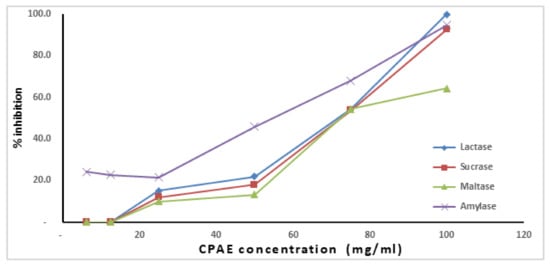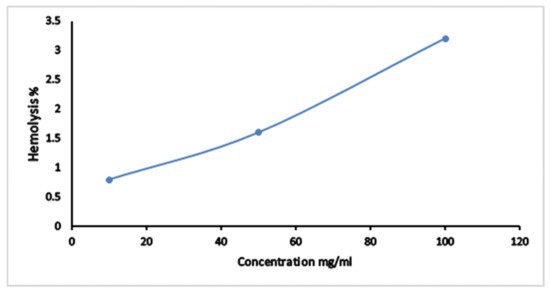You're using an outdated browser. Please upgrade to a modern browser for the best experience.
Please note this is a comparison between Version 1 by Mabrouk Abd eldaim and Version 2 by Vivi Li.
Ceratonia siliqua (Carob) is an evergreen Mediterranean tree, and carob pods are potentially nutritive and have medicinal value.
- Ceratonia siliqua
- carob
- flavonoids
- polyphenols
- antihemolytic
- antimicrobial
1. Introduction
Plants are of great interest in drug discovery and are the main source of our modern medicine. About 25% of modern medicines are derived from a plant origin and only 5–15% of plants are being investigated for their medicinal use [1]. Today, medicinal herbs and functional foods are being widely studied resulting in lucrative therapeutic potentials [2]. Where the secondary metabolites, which possessed antioxidant properties can fight several pathological disorders such as cancer, heart disease, hypertension, dementia, and stroke [3]. However, chemotherapies have many adverse effects; several anti-diabetic drugs such as Rosiglitazone and Alogliptin can have severe complications. Therefore, scientists have tried to find naturally occurring anti-diabetic compounds as they have low toxic effects [4]. In addition, the WHO has stated that if there is no action taken to develop/find new antibiotic agents, the deaths due to infection resistance will be greater than cancer [5]. Bacteria develop resistance against antibiotics due to the presence of multi-drug resistance (MDR) pumps which are predominant in Staphylococcus aureus, Pseudomonas aeruginosa, Escherichia coli, etc. Therefore, researchers are trying to find MDR inhibitors, especially those derived from medicinal plants, due to their diversity to increase the efficacy of antibiotics [6].
Ceratonia siliqua L., Carob, is an evergreen tree that belongs to the Leguminosae family. It is widely cultivated in most Mediterranean basin countries [7]. The carob fruit (bean) is called a pod and is composed of two parts: the seeds (10%) and the pulp (90%). The pulp consists of two parts: a leathery outer layer (pericarp) and a softer inner area (mesocarp) which contain the seeds [8][9][8,9]. Carob pulp contains a wide range of biologically active compounds, including polyphenols, sugars, cyclitols, amino acids, fibers, and minerals, whereas carob seeds contain gum, polyphenols, and proteins [10]. Due to its chemical composition, carob and its ethanolic extract have a strong antioxidant activity and possess several valuable therapeutic functions, such as lipid-lowering [11], anti-proliferative, anti-cardiovascular [12], and nephroprotective properties [13]. In addition, carob has exhibited significant pharmacological activities in the digestive tract including antidiarrheal, antibacterial, anti-ulcer, and anti-inflammatory actions, and possesses a laxative effect on gastrointestinal propulsion [14].
2. The Phytochemical Ingredients of the CPAE
The phytochemical analysis revealed that CPAE contained many active compounds including total phenolics, flavonoids, carbohydrates, amino, acids, and alkaloids (Table 1).
Table 1. Quantitative phytochemical component of the carob pod aqueous extract.
| Parameters | Concentration |
|---|---|
| Total flavonoids (Rutin/100 mg CPAE) | 0.752 ± 0.11 |
| Total phenolics (GA/100 mg CPAE) | 0.348 ± 0.07 |
| Total amino acids (mg/mL) | 43.28 ± 2.1 |
| Total alkaloids (mg/mL) | 15.3 ± 0.98 |
| Total carbohydrates (mg/mL) | 5.1 ± 0.23 |
The value expressed mean ± SE, Gallic acid, GA; carob pod aqueous extract, CPAE.
Moreover, HPLC analyses showed that CPAE contained a high content of gallic acid followed by catechin, protocatechuic acid, and cinnamic acid, while it also contained a low concentration of p-coumaric acid, rutin, gentisic acid, p-hydroxybenzoic acid, vanillic acid, and ferulic (Figure 1 and Table 2).


Figure 1. High-Performance Liquid Chromatography (HPLC) analysis of CPAE.
Table 2. The constituents of carob pod aqueous extract.
| Compound | Concentration (µg/g) | Retention Time |
|---|---|---|
| Gallic acid | 833.751 | 3.74 |
| Catechin | 180.197 | 11.67 |
| 17.47 | ||
| Ferulic acid | ||
| 2.038 | ||
| 20.79 |
3. The Antioxidant Effect of CPAE
The antioxidant effect of CPAE was measured in vitro. The scavenging activity of the CPAE was often evaluated according to its IC50; the lowest IC50 value corresponds to the highest free radical scavenging activity. It is obvious that CPAE had DPPH, NO, FRAP, and OH free radical scavenging activities. The CPAE antioxidants properties were lower than those of ascorbic acid which was used as a positive control, at p < 0.05 (Table 3).
Table 3. IC50 of carob pod aqueous extract and ascorbic acid as positive control antioxidants activities.
| Parameters | CPAE IC50 (mg/mL) |
Ascorbic Acid IC50 (mg/mL) |
|||
|---|---|---|---|---|---|
| DPPH scavenging activity | 3.78 ± 0.08 * | 1.59 ± 0.01 | |||
| Ferric reducing activity | 6.30 ± 0.11 * | 4.21 ± 0.25 | |||
| Protocatechuic acid | 110.576 | 7.98 | |||
| NO scavenging activity | 4.33 ± 0.06 * | 3.48 ± 0.31 | Cinnamic acid | 23.335 | 39.7 |
| •OH, scavenging activity | 7.07 ± 0.12 * | 1.32 ± 0.01 | p-coumaric acid | 12.707 | 36.42 |
| Rutin | 10.983 | 35.9 | |||
| Gentisic acid | 3.487 | 7.04 | |||
| p-hydroxybenzoic acid | 2.731 | 9.88 |
In each raw, CPAE mean with * was significantly difference compared to that of the ascorbic acid mean, at p < 0.05.
4. Anti-Digestive Enzymes Effect of CPAE
The results in Figure 2 revealed that Amylase, Maltase, Sucrase, and Lactase activities were strongly inhibited by CPAE in a concentration-dependent manner.


Figure 2. Anti-digestive enzyme effect of carob pod aqueous extract (CPAE).
5. The Hemolytic Effect of CPAE
Hemolytic activity of CPAE was screened against normal human erythrocytes. Figure 3 showed that the hemolytic percent was increased from 0.7 to 3.2% when the concentration of CPAE increased in the range from 10 mg/mL to 100 mg/mL. The calculated hemolytic IC50 was 1562.5 mg/mL.


Figure 3. The antihemolytic activity of carob pod aqueous extract (CPAE).
6. Anti-Microbial Activity of CPAE
6.1. The Antibacterial Activity against Gram-Negative, Gram-Positive Bacteria and Antifungal Effect
Table 4 shows that the CPAE had a significant antibacterial property against Bacillus subtilis, Staph. aureus, and Escherichia coli. However, CPAE did not show any activity against Gram-negative bacteria Pseudomonas aeruginosa. Moreover, it exhibited a potent antibacterial effect compared to that of gentamicin (positive control antibiotic) in the case of Staphylococcus aureus and Escherichia coli with ZOI (25 and 24 mm, respectively). In addition, the extract exhibited an antifungal effect against Candida albicans, while it did not show any activity against Aspergillus falvus Table 4.
Table 4. Antimicrobial activity of carob pod aqueous extract.
| Pathogenic Microorganism | Inhibition Zoon (mm) | |
|---|---|---|
| CPAE | Postive Control | |
| Bacillus subtilis (ATCC 6051) | ||
Table 5 indicated that the CPAE was considered safe for Vero cells until 5000 µg/mL where cell viability was 96.5%. Moreover, our results showed that CPAE inhibited HSV-1 in a concentration-dependent manner (Table 6).
Table 5. Effect of carob pod aqueous extract on Vero cells viability.
| Concentration (µg/mL) | Viability % |
|---|
Table 6. Effect of carob pod aqueous extract on the viability of Vero cells infected with HSV-1.
| μg/mL | Viability | Antiviral Effect % | ||
|---|---|---|---|---|
| 17.0 ± 0.12 * | 25.0 ± 0.3 | |||
| 10,000 | 39.4 ± 0.01 a | Staph. aureus (ATCC 6538) | 25.0 ± 0.2 * | |
| 5000 | 96.5 ± 0.05 | 15.0 ± 0.11 | ||
| b | Escherichia coli (ATCC 8739) | 24.0 ± 0.3 * | 17.0 ± 0.09 | |
| 2500 | 97.4 ± 0.02 b | Pseudomonas aeruginosa (ATCC 90274) | N.A | 22.0 ± 0.12 |
| 1250 | 99.0 ± 0.04 c | Candida albicans (ATCC 10221) | 15 ± 0.13 | |
| 625 | N.A | |||
| 99.8 ± 0.05 | c | Aspergillus falvus (ATCC 9643) | N.A | N.A |
In each raw, CPAE mean with * was significantly difference compared to that of gentamicin mean, at p < 0.05. N.A: No activity, positive control is gentamicin, Carob pod aqueous extract, CPAE.
6.2. Antiviral Activity of CPAE
| 312.5 | |
| 100.0 ± 0.08 | |
| c | |
| IC50 | 9154.22 |
The value expressed mean ± SE. Means with different superscript letters were significantly different at p < 0.05. Mean with letter (a) was the lowest one while mean with letter (c) was the highest one.
| 0 | 37.94 | 0.00 |
| 1250 | 40.78 | 4.58 ± 0.01 a |
| 2500 | 50.40 | 20.08 ± 0.25 b |
| 5000 | 66.80 | 46.50 ± 1.5 c |
| Vanillic acid | ||
| 2.261 | ||
Value expressed mean ± SE. Means with different superscript letters were significantly different at p < 0.05. Mean with letter (a) was the lowest one while mean with letter (c) was the highest one.
